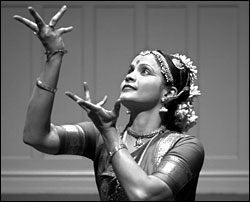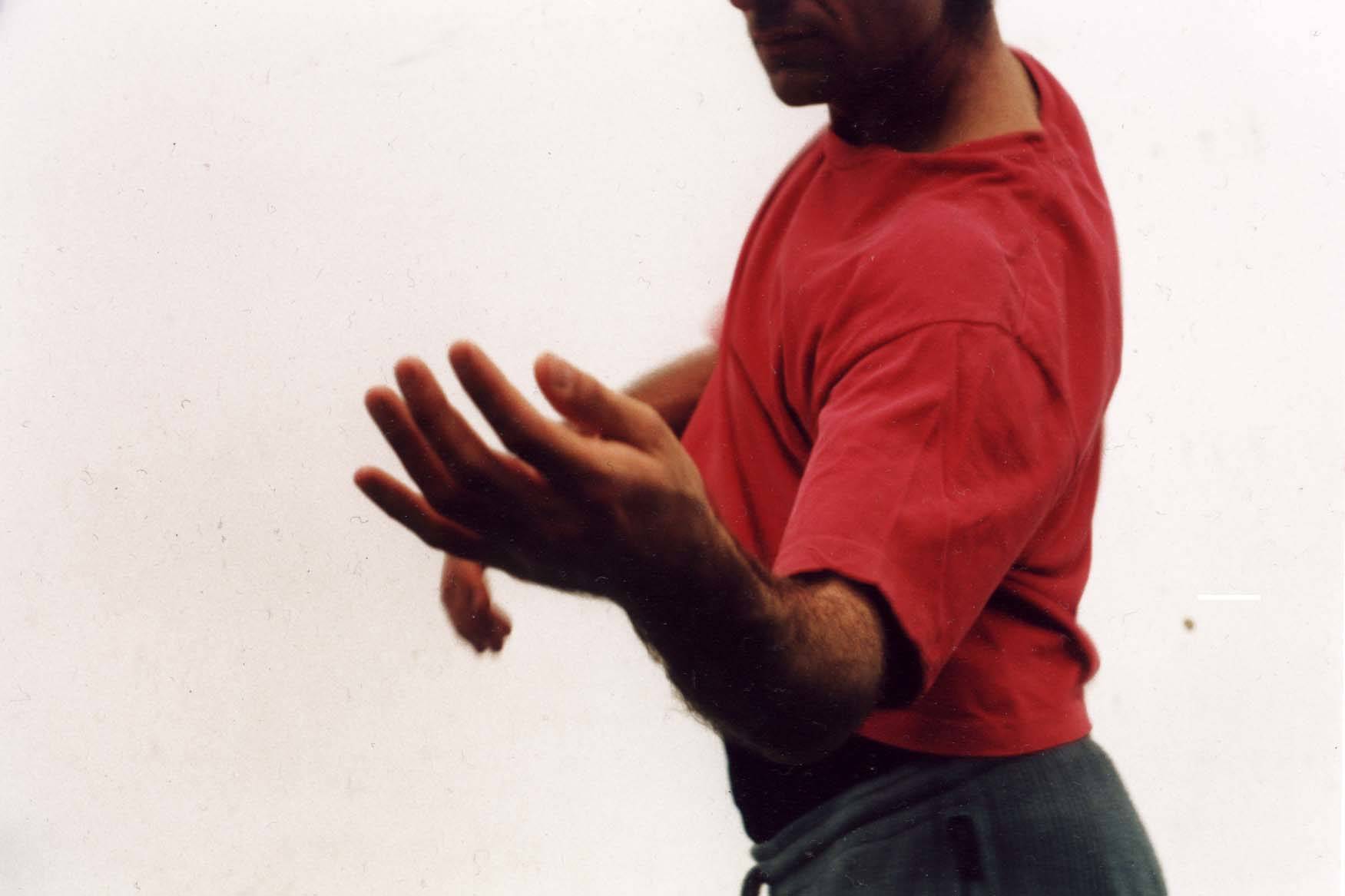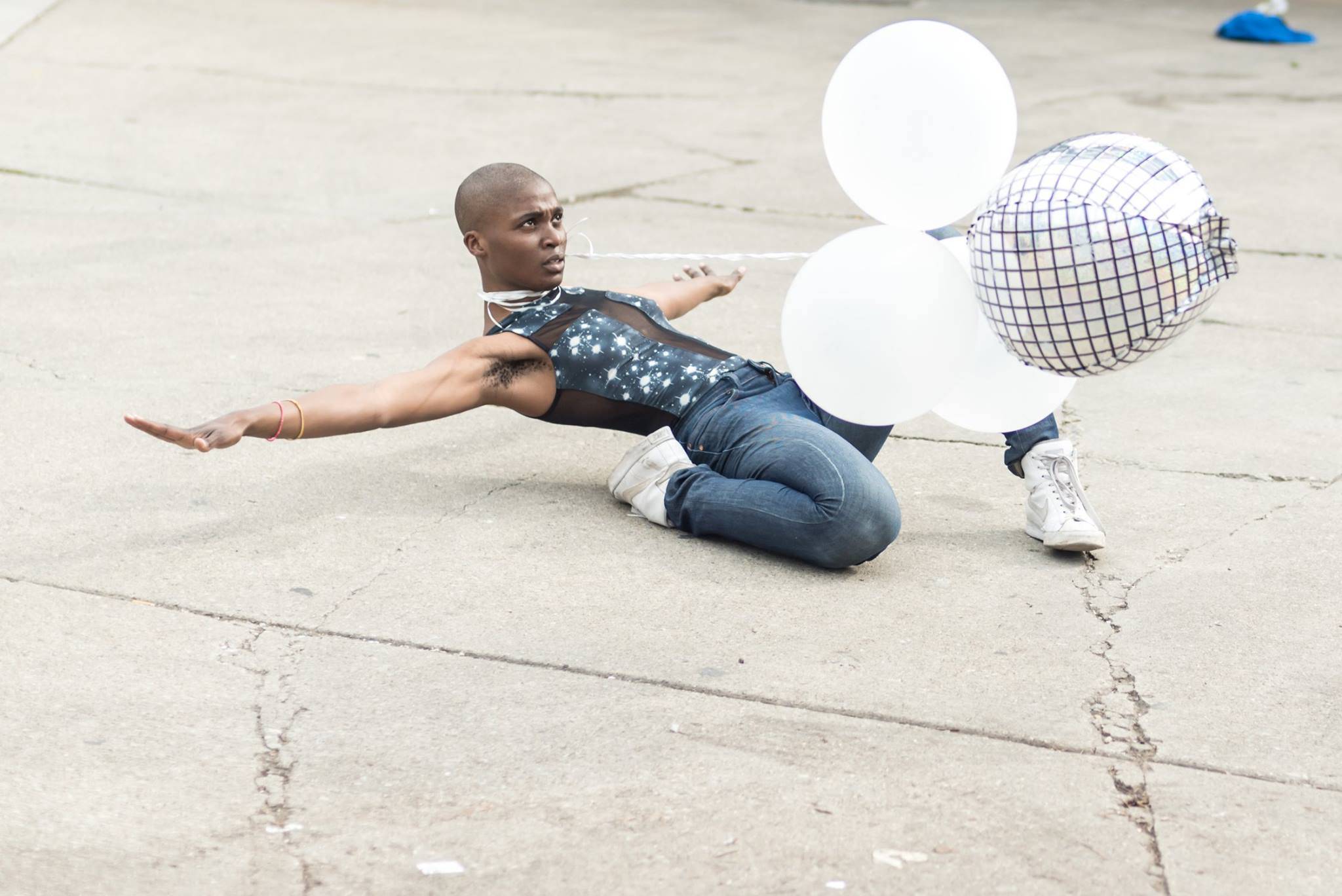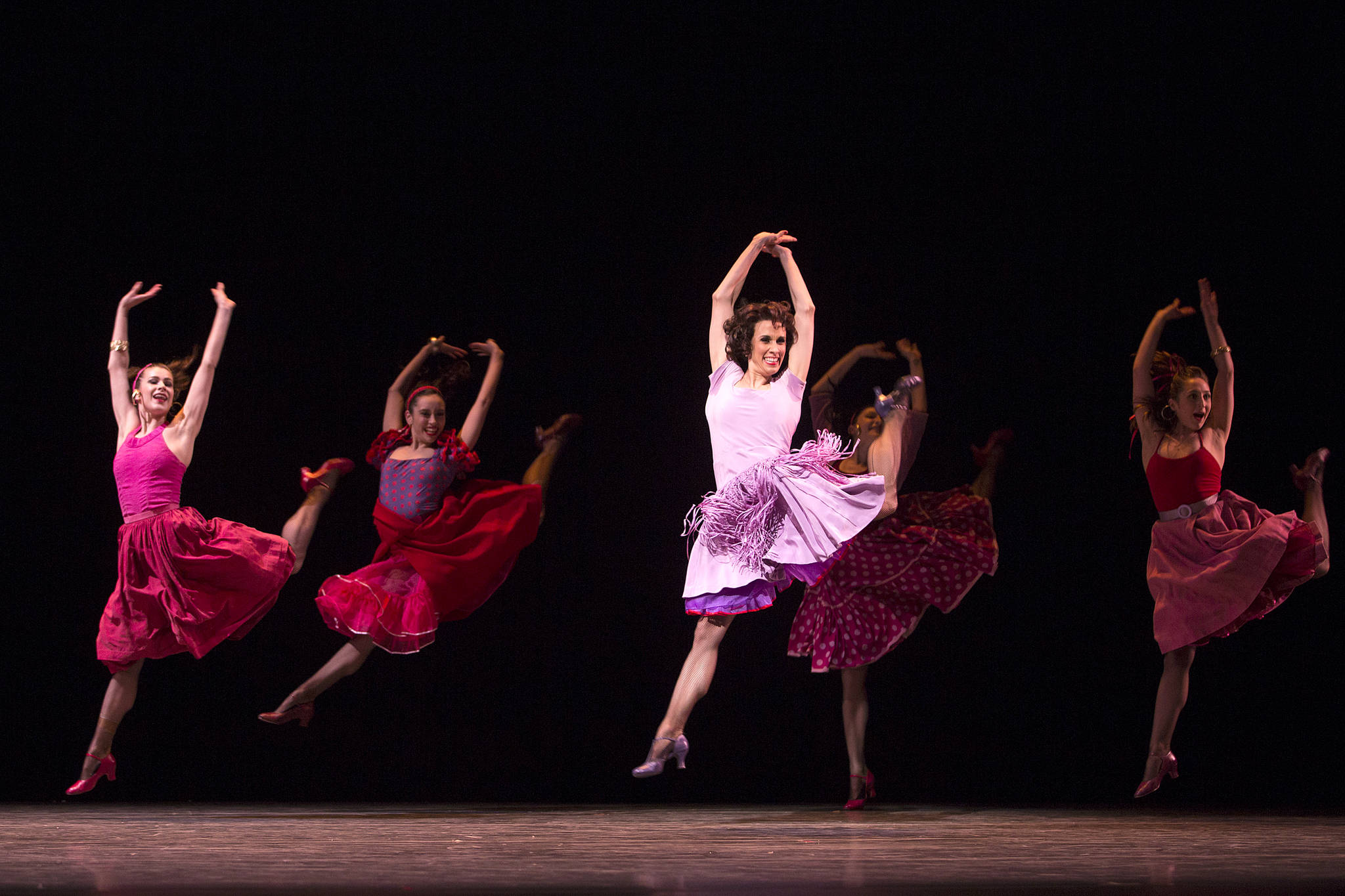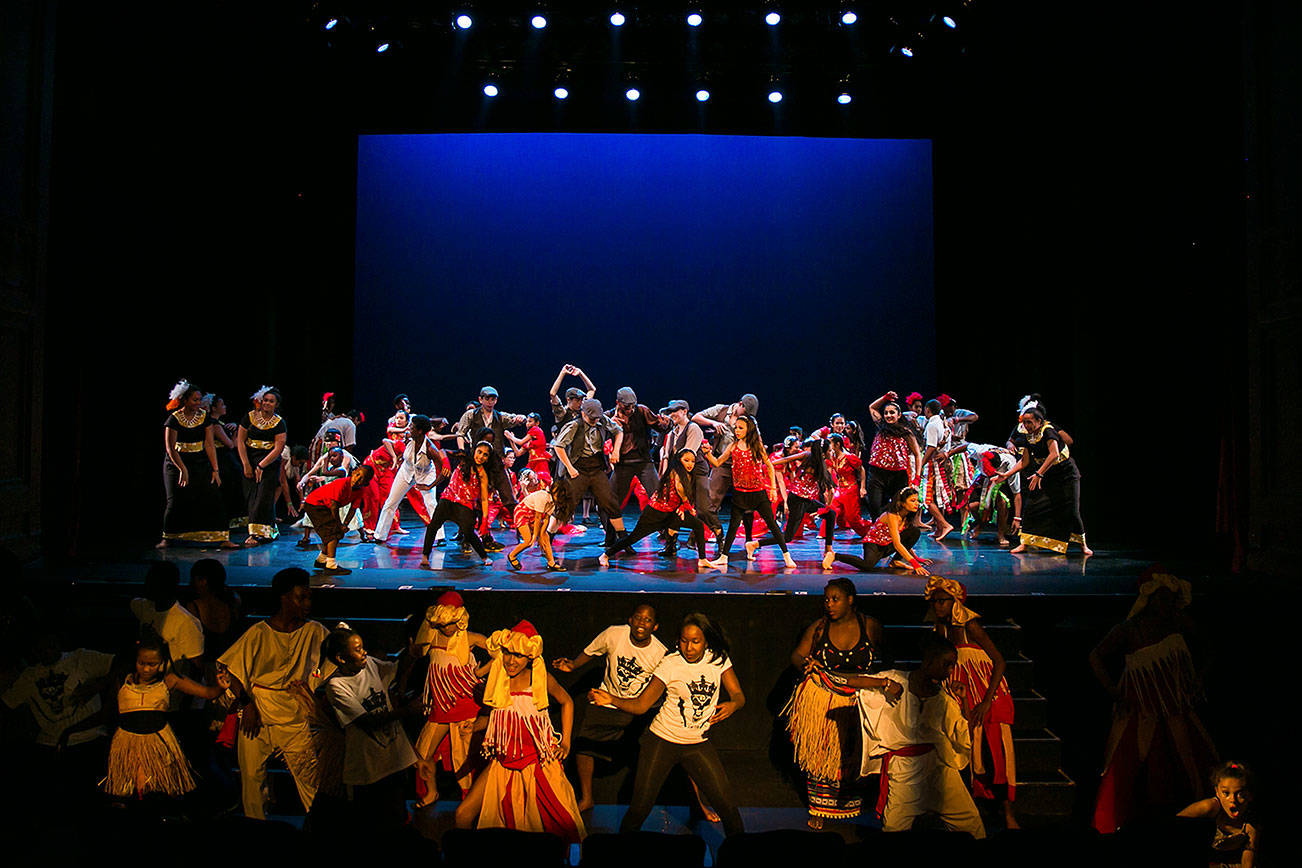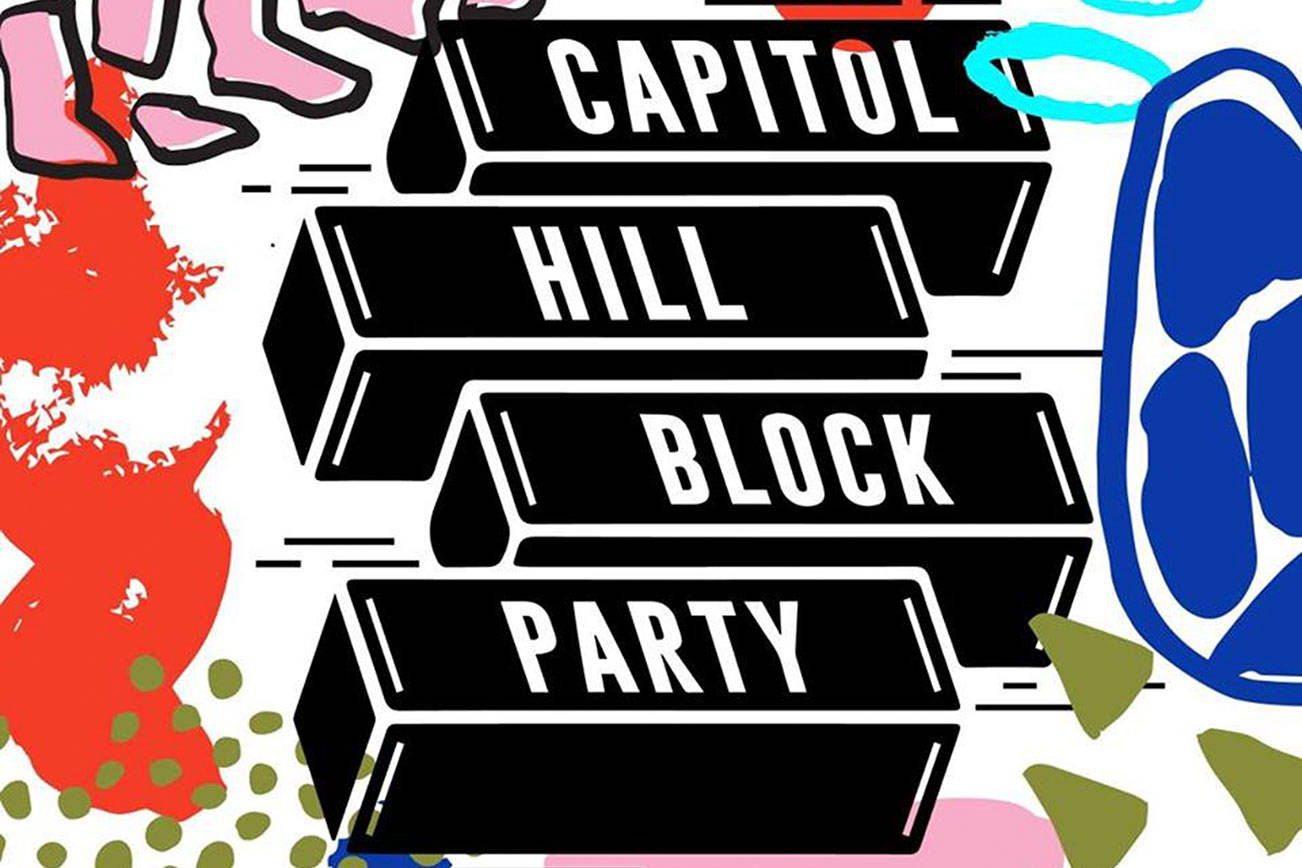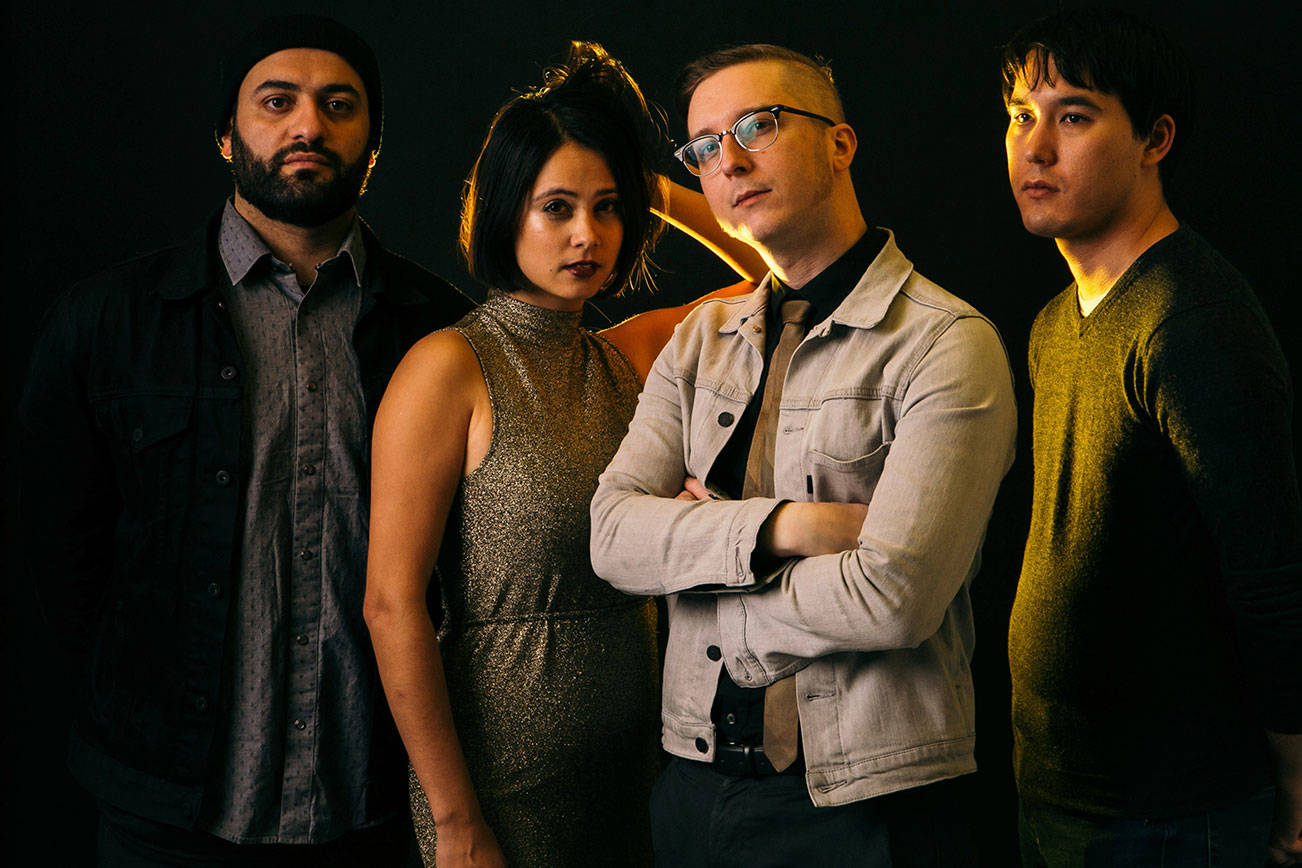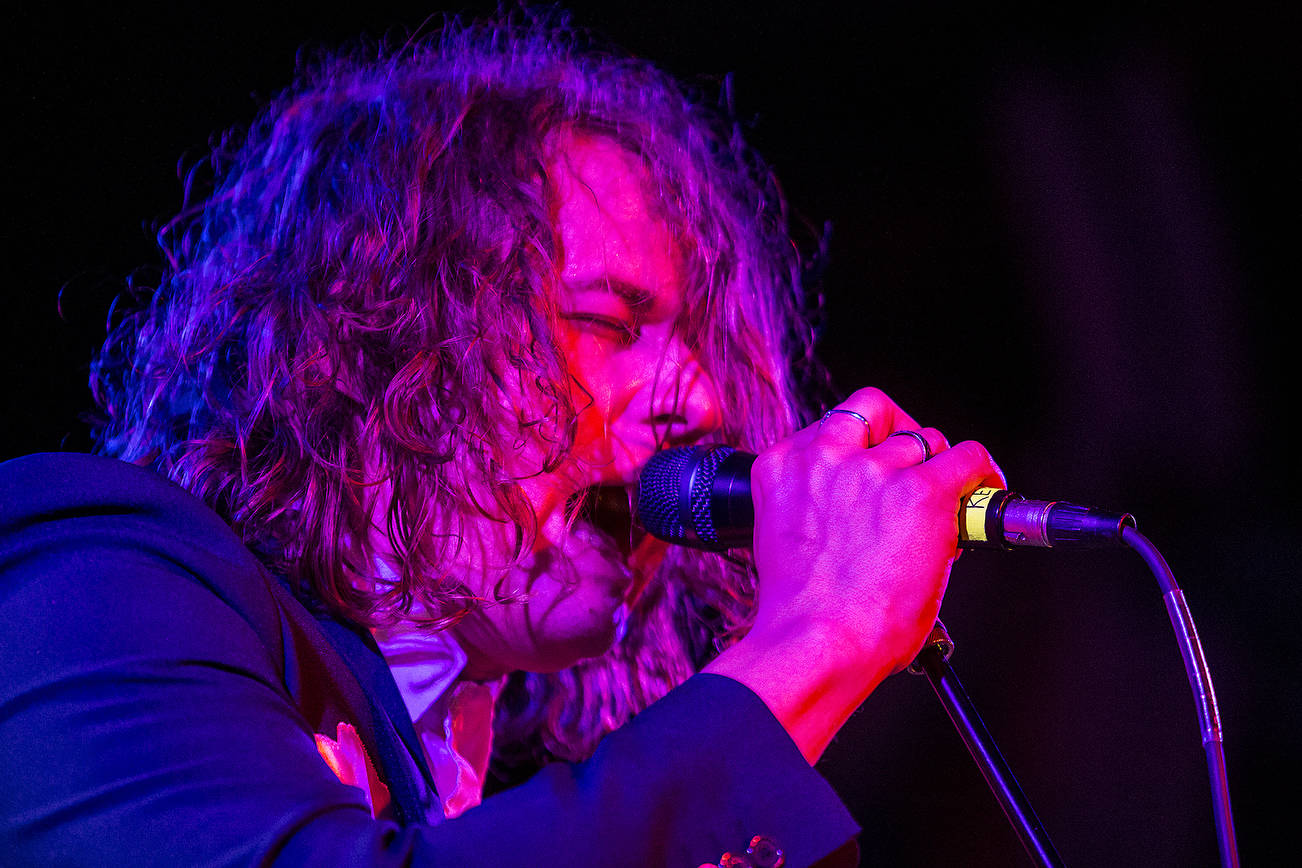From the beat of our hearts to our feet on the floor, we are all percussion dancersa complex set of cross- and counter-rhythms. Which might explain the ancient, international appeal of rhythmic dance, featured in the Dance to the Music program Saturday, March 1 at Town Hall (see Dance Calendar for details). Part of Town Hall’s “World in Seattle” series, the program features artists who live and work in the Northwest, while embodying dance traditions from around the globe.
Closest to home are the Leeng’it Kust’i Dancers, representing clans of the Tlingit tribe, for whom dance serves to pass on history and honor the spirits of the natural world. For them, rhythm has a unifying power: Individuals may step forward to tell a story, taking on a series of roles as they spin out their magical tales, but the ensemble maintains the ongoing pulse, and when the narrator returns to the group, he rejoins that beat as well.
That group heartbeat is subdivided, fractured, inverted, and turned on its head in Bharata Natyam, one of the oldest dance forms from India. Here the body is like a jazz orchestra, with different limbs playing different rhythmic lines: The eyes move separately from the head and complex hand gestures shift in counterpoint to long stamping phrases, while the rest of the body slides through an encyclopedia of postures. Originally performed in temples and royal courts, the physical language is incredibly detailed, down to tiny vibrations of the eyeballs and twitching little fingers. Like the Tlingit artists, Meera Krishna and Joyce Paul tell stories about gods and mortals, calling down a blessing on their audiences.

Leeng’it Kust’i Dancers photo: Ron Wurzer |
Taiko drumming is like an ultraloud form of meditation, but as the group hammers out syncopated patterns, a structure begins to organize the players. The requirements of drummingstriking with a certain force and speed at a specific timegives the movement a formal aspect that takes it close to ritual. Seattle’s Kokon-Taiko performs a highly energized and choreographed version of the art form; the players’ gestures have the power and fluidity of a martial art.
Combining African polyrhythms brought to this country through the slave trade with the hard-soled shoes of Irish clog dancers, rhythm tap is a dance form whose multicultural roots make it unquestionably American. It’s about playing the floor with your feet, and the emphasis on rhythm gives the performers great latitude in personal style. Cheryl Johnson’s upper body is poised as her legs sort through multiple layers of patterns, while Anthony Peters occasionally seems to be channeling Bill Robinson’s dapper quality or the aggressive tilt of Jimmy Cagney’s chest. The two of them will be joined by their former student Maya Smullyan-Jenkins, who has gone on to join Savion Glover’s company, exploring the connections between tap and hip-hop.
It’s likely the audience for Dance to the Music will leave hearing their own personal rhythm tracksthe sound of their feet on the floor as they exit the theater.
